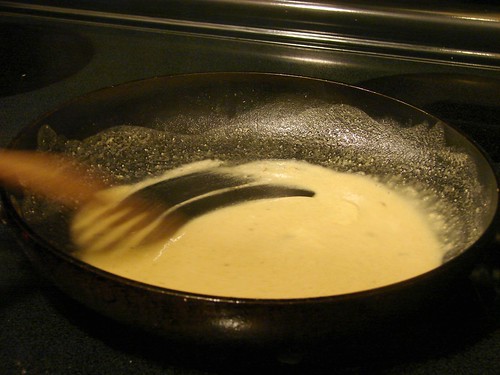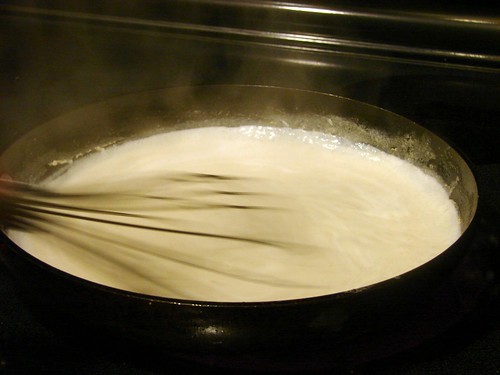Roux and the White Gravy.
Thanks for coming back for another tip or trip in the Chef School corner. This time we’ll take a look at Roux. This is the base behind a number of sauces, as well as most gravies. A roux will help thicken any sauce and add more depth of flavor.
A roux will be lighter or darker depending on the type of sauce you plan on creating. Lighter roux can easily be made with butter, however, if you plan on a dark sauce/gravy, it may be best to use fat with a higher smoking point. a vegetable, you will cook your roux
Making a Roux
In a medium pan, heat the fat over medium heat. Then add flour. The ratio is 1:1, although bumping the flour a bit can be helpful and lowers the fat content. So, for every tablespoon of fat add 1-1/2 tablespoon of flour. Using a whisk incorporate the flour into the fat. Keep whisking until it reaches the desired color. The objective at this point is to cook the flour, that’s why the temperature shouldn’t be too high.

That’s it.
If you decided to make a gray with this roux, be mindful not to add hot liquids, instead, add broth, water or milk that is at room temperature or warm. Also, add them a little at a time, making sure to stir vigorously to avoid creating lumps in the gravy. Also remember that in order to achieve its full thickening potential, you must allow the sauce to boil lightly before turning it off.
I made a white gravy with the roux. I started out with bacon fat, about 2 tablespoons and 3 tbsp of flour. I cooked the flour until lightly golden, about 5 minutes, then added about 2 cps of whole milk.
Once thickened, I seasoned it with sea salt, freshly ground pepper and a dash of nutmeg. It became the background for my Bacon & Asparagus Gravy. It was delicious!
